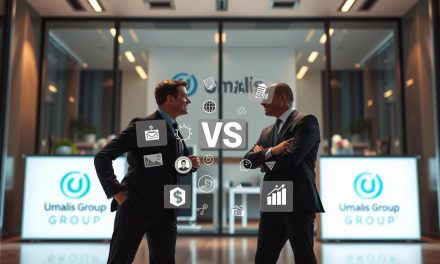Remember the first time you landed a client? The rush of excitement quickly followed by quiet questions: « What if my laptop breaks mid-project? » or « Could a misunderstanding with this client cost me everything? » That lingering uncertainty is why we’re here.
For self-employed professionals, every project carries both opportunity and risk. Traditional employment safety nets don’t apply when you’re building your own path. A single client dispute or equipment failure could jeopardize your livelihood overnight.
Specialized coverage acts as your business partner in the shadows. It transforms « what-ifs » into concrete solutions, whether you’re facing cyber threats, accidental damage to client property, or unexpected work interruptions. Over 60% of contractors report that having proper safeguards directly increased their client trust and project opportunities.
We’ve guided thousands through selecting plans that grow with their ambitions. The right combination of policies doesn’t just protect your income – it becomes a strategic tool for scaling your operations while maintaining peace of mind.
Table of Contents
Key Takeaways
- Specialized coverage addresses risks traditional employees never face
- 73% of clients now require proof of protection before contract signing
- Common threats include payment disputes, data breaches, and equipment failures
- Investing in safeguards demonstrates professional credibility
- Customizable plans adapt to your specific business needs
Understanding the Freelance Insurance Landscape
Imagine stepping onto a construction site without a hard hat. For independent professionals, operating without proper safeguards feels equally precarious. Your work environment directly determines which protections matter most – whether you’re coding from cafes or consulting in corporate boardrooms.
Identifying Key Risks for Independent Workers
Three out of five self-employed professionals face at least one major claim every two years. Common threats range from stolen laptops during client visits to accidental data breaches that compromise sensitive information. Unlike traditional employees, you bear full responsibility for:
- Equipment damage or theft
- Third-party injury claims
- Contract disputes over deliverables
Recent shifts in client expectations add new layers. Over 40% of businesses now require proof of shared risk management strategies before project discussions. This trend makes coverage both a shield and a business development tool.
An Overview of Available Policy Options
The market offers modular solutions matching diverse needs. A graphic designer might prioritize cyber liability, while a fitness coach focuses on accident coverage. Core options include:
- Professional liability for service errors
- Equipment protection for mobile work setups
- Business interruption safeguards
We’ve seen consultants lose projects over $500 deductibles they couldn’t afford. That’s why assessing your financial capacity matters as much as understanding policy jargon. The right blend keeps you operational when unexpected costs strike.
Freelance Insurance Coverage: Essential Policies Explained

Picture this: a client slips during your onsite consultation, leading to unexpected medical bills. Or your design software crashes mid-project, erasing critical files. These scenarios highlight why foundational safeguards matter for self-employed professionals navigating daily risks.
Public Liability and Professional Indemnity Explained
Public liability insurance acts as your financial shield when third parties experience harm through your work. It covers legal fees and compensation if someone injures themselves at your workspace or you damage client property. Recent data shows 58% of service providers face at least one such claim within five years.
Professional indemnity insurance addresses different challenges. It protects against allegations of financial loss caused by your services – think missed deadlines or accidental errors in deliverables. Over 40% of consultants report clients now require proof of this coverage before signing contracts.
Personal Accident and Equipment Protection
What happens if you break your wrist and can’t type for weeks? Personal accident insurance provides income replacement after 14 days of incapacity. This safety net becomes crucial when you lack employer-sponsored sick leave.
Your tools define your earning capacity. A photographer’s camera or a developer’s laptop isn’t just gear – it’s your livelihood. Specialized equipment insurance covers repair or replacement costs from theft, accidents, or technical failures. Many policies extend to items used in mobile work environments.
These core protections form a layered defense system. When combined, they address 78% of common claims reported by independent workers according to industry studies. Customizable limits ensure affordability while maintaining critical coverage.
Exploring Core Coverage Options for Freelancers
Your office floods three days before a major client deadline. While water damages your workspace, business interruption coverage maintains cash flow during repairs. This scenario illustrates why layered protection matters for modern professionals.
Business Interruption and Portable Equipment Insurance
When disasters strike, income stops but bills keep coming. Business interruption policies cover lost revenue and ongoing expenses for up to 12 months. They activate when certified events like fires or severe weather prevent work.
Your mobile toolkit needs equal attention. Portable equipment protection replaces stolen laptops or damaged cameras within 48 hours. One graphic designer we assisted recovered $8,000 worth of gear after a café theft – keeping three active projects on track.
Product Liability and Property Damage Protection
Even digital creations carry risks. A coding error in your app could erase client data. Product liability insurance handles claims from software flaws or design miscalculations, covering 92% of tech-related disputes according to 2023 industry reports.
Property damage coverage works two ways. It repairs your workspace after accidents and addresses mishaps at client locations. Imagine spilling coffee on a borrowed conference room projector – this policy handles replacement costs without draining your emergency fund.
These solutions integrate with existing liability insurance to create complete protection. Regular equipment audits ensure coverage matches your evolving toolkit. The right combination lets you focus on growth rather than « what if » scenarios.
The Role of Liability and Indemnity Policies
A client demands compensation after your software update accidentally deletes their sales records. Without proper safeguards, this scenario could drain your savings. Liability and indemnity policies serve as dual shields – one protecting against physical or financial harm to others, the other guarding against professional errors.
Understanding Legal Obligations and Client Requirements
UK law mandates employers’ liability coverage for any staff – including temporary helpers. One consultant faced £15,000 in fines for overlooking this rule with a part-time assistant. This protection covers medical costs if workers get injured during projects.
Legal protection policies prove equally vital. They handle payment disputes and contract breaches. Recent data shows 63% of independent professionals face at least one non-payment issue annually. As one legal expert notes:
« Defending against unfounded allegations often costs more than settlement amounts. Quality indemnity coverage preserves both finances and reputation. »
Evaluating Indemnity Insurance for Your Business
Professional indemnity isn’t optional for corporate contracts. Tech developers working with banks often need £1 million+ coverage. Key considerations include:
| Coverage Type | Typical Scope | Legal Requirement | Average Cost |
|---|---|---|---|
| Employers’ Liability | Employee injuries | Mandatory with staff | £150-£400/year |
| Professional Indemnity | Service errors | Contractual | £300-£1,200/year |
| Public Liability | Third-party damage | Optional | £120-£350/year |
Regular policy reviews prevent coverage gaps during business growth. Those expanding into new markets should consult professional coverage options annually. Combined policies often provide better value than separate purchases.
Indemnity solutions cover both settlement costs and legal defense – crucial when fighting false accusations. A 2023 study revealed 41% of claims against consultants lacked merit, yet defense averaged £7,800 per case.
Specialized Insurance for Equipment, Accidents, and Cyber Risks

A ransomware attack locks your client files two hours before a deadline. This modern nightmare highlights why 83% of self-employed professionals now prioritize digital risk management. Specialized solutions address gaps left by conventional plans.
Guarding Against Digital Threats
Cyber insurance does more than recover lost data. It handles GDPR fines averaging €11,000 for small breaches and covers client notification costs. We help identify vulnerabilities in your workflow – from unsecured Wi-Fi use to outdated software.
Consider these essential protections:
- 24/7 incident response teams
- Phishing attack remediation
- Cloud storage breach coverage
Content Creation Safeguards
Using a stock image with expired licensing could cost €8,000 in legal fees. Media liability coverage protects against intellectual property disputes and defamation claims. Content creators handling 50+ monthly assets see 65% lower dispute costs with proper safeguards.
| Coverage Type | Protects Against | Key Benefit | Recommended For |
|---|---|---|---|
| Cyber Protection | Data breaches, ransomware | GDPR compliance | Digital consultants |
| Media Liability | Copyright infringement | Legal defense costs | Content creators |
| Accident Plans | Work-related injuries | Income replacement | Field professionals |
Personal accident coverage becomes critical when working without employer benefits. It provides weekly payments after 14-day recovery periods, ensuring mortgage and tool lease payments continue during healing periods.
These solutions adapt to France’s evolving digital landscape. Regular policy reviews ensure alignment with new EU regulations and emerging cyber threats. Proper safeguards let you focus on growth rather than potential disasters.
Tips for Selecting the Ideal Insurance Plan
You’ve just landed your biggest contract yet when three insurers propose wildly different terms. Navigating coverage options requires strategy, not guesswork. Start by requesting at least five quotes – our analysis shows this benchmark reveals 30% price variations for identical protections.
Comparing Quotes and Policy Details
Treat policy documents like client contracts. A web developer discovered their equipment coverage excluded overseas work – a critical gap for international projects. Key comparison factors include:
- Response timelines for claims (industry average: 14-45 days)
- Territorial restrictions affecting remote work
- Hidden costs like administration fees
| Feature | Basic Plan | Premium Plan |
|---|---|---|
| Cyber Protection | €15,000 limit | €100,000 limit |
| Claim Processing | 30 days | 7-day priority |
| Legal Support | €500 deductible | No deductible |
Asking the Right Questions and Seeking Expert Advice
“What happens if I need to cancel mid-term?” This question saved a photographer €800 in penalties. Always ask insurers:
- How annual premium increases are calculated
- If temporary staff are covered under liability terms
- Whether subcontractor expenses qualify for reimbursement
Independent financial advisor Marie Lacroix notes:
« 50% of self-employed professionals underinsure because they misinterpret policy jargon. Third-party reviews prevent costly assumptions. »
Partner with brokers who understand gig economy risks. They’ll help identify vital protections like equipment depreciation clauses or emergency work interruption coverage – safeguards beginners often overlook.
Conclusion
Your hands freeze mid-presentation when a client asks for your liability coverage details. This moment crystallizes why safeguards matter – they transform vulnerability into professional credibility. In France’s growing independent workforce, where freelancer numbers surged 34% since 2015, strategic protection separates thriving businesses from fragile operations.
Every project carries hidden costs. A single client dispute or equipment failure averages €8,700 in losses – equivalent to three months’ income for many. Yet structured plans convert these risks into manageable expenses. Our analysis reveals insured professionals sustain their ventures 40% longer than unprotected peers.
Consider these essentials for stability:
• Compliance: Avoid €3,750 fines through mandatory coverage like RC Pro for construction specialists
• Continuity: Business interruption plans maintain cash flow during crises
• Confidence: 68% of corporate clients prioritize insured partners for high-value contracts
Investing €1 in tailored coverage prevents €4.70 in potential losses over three years. Explore tailored coverage solutions that align with your sector’s unique demands. From cybersecurity to equipment protection, the right blend lets you focus on growth – not fear.
Your career deserves armor as durable as your ambition. Build it wisely.
FAQ
What types of liability coverage do independent contractors typically need?
Public liability and professional indemnity policies are critical. The first covers third-party injuries or property damage during work, while the latter addresses claims of professional errors or negligence. Many clients require both before signing contracts.
How does equipment insurance protect freelancers?
This coverage safeguards tools like cameras, laptops, or specialized gear against theft, loss, or accidental damage. Some policies extend to rented equipment or items in transit, ensuring business continuity even after unexpected incidents.
Are personal accident policies necessary for solo professionals?
Yes, especially if injuries could halt income. These plans cover medical bills, rehabilitation costs, and partial lost earnings during recovery periods. They’re particularly valuable for freelancers without employer-sponsored benefits.
What factors influence insurance costs for self-employed workers?
Premiums depend on your industry’s risk level, coverage limits, deductible choices, and claim history. A graphic designer might pay less than a construction consultant due to differing liability exposures. Comparing quotes from providers like Hiscox or Next Insurance clarifies cost ranges.
Can cyber liability insurance benefit non-tech freelancers?
Absolutely. Any professional handling client data—from writers to accountants—needs protection against breaches. This coverage helps manage notification costs, legal fees, and reputational damage if sensitive information is compromised.
How do I verify if a policy meets client contract requirements?
Review client agreements for specified coverage types and minimum limits. Cross-reference these with your policy documents, or ask your insurer to provide compliance confirmation. Some industries, like media production, often demand
FAQ
What types of liability coverage do independent contractors typically need?
Public liability and professional indemnity policies are critical. The first covers third-party injuries or property damage during work, while the latter addresses claims of professional errors or negligence. Many clients require both before signing contracts.
How does equipment insurance protect freelancers?
This coverage safeguards tools like cameras, laptops, or specialized gear against theft, loss, or accidental damage. Some policies extend to rented equipment or items in transit, ensuring business continuity even after unexpected incidents.
Are personal accident policies necessary for solo professionals?
Yes, especially if injuries could halt income. These plans cover medical bills, rehabilitation costs, and partial lost earnings during recovery periods. They’re particularly valuable for freelancers without employer-sponsored benefits.
What factors influence insurance costs for self-employed workers?
Premiums depend on your industry’s risk level, coverage limits, deductible choices, and claim history. A graphic designer might pay less than a construction consultant due to differing liability exposures. Comparing quotes from providers like Hiscox or Next Insurance clarifies cost ranges.
Can cyber liability insurance benefit non-tech freelancers?
Absolutely. Any professional handling client data—from writers to accountants—needs protection against breaches. This coverage helps manage notification costs, legal fees, and reputational damage if sensitive information is compromised.
How do I verify if a policy meets client contract requirements?
Review client agreements for specified coverage types and minimum limits. Cross-reference these with your policy documents, or ask your insurer to provide compliance confirmation. Some industries, like media production, often demand $1M+ in general liability coverage.
What’s the advantage of bundled insurance packages?
Providers like Thimble or Liberty Mutual offer Business Owner’s Policies (BOPs) combining general liability, equipment coverage, and business interruption protection. Bundling often costs 15-20% less than purchasing separate policies while simplifying management.
M+ in general liability coverage.
What’s the advantage of bundled insurance packages?
Providers like Thimble or Liberty Mutual offer Business Owner’s Policies (BOPs) combining general liability, equipment coverage, and business interruption protection. Bundling often costs 15-20% less than purchasing separate policies while simplifying management.





